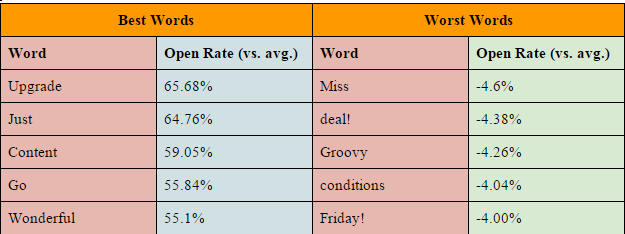Are Your Subject Lines Strong Enough?
A good subject line should be short and sweet, with keywords the make or break between good and attention-grabbing.
Defining a great subject line depends on the goal of a campaign or the voice of the brand and generally speaking, should be no longer than a tweet, says Jessica Best, digital marketing evangelist at emfluence.
“Though subject lines are vastly different between brands, there are a few overarching best practices. One, we’re seeing shorter and shorter subject lines,” says Best.
If 140 characters on Twitter is limiting, try aiming for 40 to 45 characters in an email subject line, says Best.
“The maximum is 80, but with mobile open rates growing all the time, you’re only getting a few words in the mobile inbox.”
Subject lines with a human touch also work better and subject lines starting with something like “just checking…” can feel more like a friendly reminder than a piece of marketing information.
“But don’t get gimmicky,” warns Best. “Anything that works once will have diminishing returns once the trick has worn off,” she says.
A classic example of this, is the common use of “RE:” in a subject line, to make the email look like a reply to an active thread.
Creating a short and sweet subject line is not enough. Email marketers should also constantly test for words that work and those that don’t, says Dela Quist, chief executive (CEO) of email marketing agency Alchemy Worx.
“The only thing that will make a long-term difference to the performance of your campaigns is to test and keep testing,” says Quist. “Whether you test manually or use a tool, you have to test every subject line.”
Quist’s team analyzed more than 21 billion emails used by 2,500 marketers to compare subject line performance.
They found that a single word could make a big difference. For example, words like “upgrade,” “just,” “content,” and “go” can help brands improve consumer open rates, while “miss,” “deals,” “groovy,” and “conditions” are among the worst-performing.

Of course, the best and worst words to use vary for different industry verticals. A travel brand may get a lower response rate if it puts directional words like “east” or “south” in the subject line, for example.
“If you put ‘fly south’ in the subject line, what does the email mean to travelers who want to go to the east or the north? How many people do I know out of the overall database will actually fly to the south next week?” Quist says.
“Remember, a highly targeted subject line has a higher open rate, but it can only reach a very small group of people.”
- 5 Keys to Building a Quality Email List
- Silent Video May Become Your Brand’s Loudest Statement
- A Glance Into the Future of Brand Loyalty
- 5 Key Tips for Marketing to Moms
This article originally published at ClickZ here




